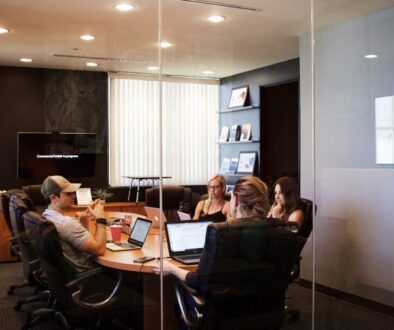There are a number of exciting trends in Recruitment & HR in your Industry. Tengai HR robot flips the traditional job interview, data analytics tools streamline hiring processes, flexible work schedules help differentiate brands, and more. Let’s take a look at a few of the most interesting trends in HR and recruitment in 2020.
Tengai HR robot flips the job interview process
A new robot, the Tengai HR robot, is changing the way we conduct job interviews. The 16-inch robot asks critical questions with a human-like tone and voice. Its interview transcripts can be viewed by recruiters and help them determine which candidates to move on to the next step.
The Tengai HR robot saves time for hiring companies, while providing a positive candidate experience. It can assess candidate personality traits, which are linked to future work performance. In addition, it will help mitigate bias across the recruitment funnel. The robot was developed by a Swedish HR startup called Tengai AB.
The company’s robot interviews are conducted remotely, but they can also be done via the Tengai’s physical presence. Its remote capabilities, for example, came in handy during a recent pandemic, because the robot was unaffected by the virus. The robot is now helping multiple companies in Sweden, both in the private and public sectors. The company has plans to expand its presence beyond the Swedish market.
Data analytics tools help streamline the hiring process
The hiring process can be made more efficient by using data analytics tools. These tools can help you streamline the hiring process and reduce human errors. They can also help you determine the best candidate for the open position. The data analytics tools can also help you create a better recruitment strategy.
ATS systems can streamline the hiring process by integrating with the major job boards. These systems can organize applications, allow candidates to create profiles and keep track of all activity surrounding each candidate. Hiring managers can then create a job requisition and approve the applicants within the system. Then, the job requisition can be published on the organization’s website or on external job boards.
Hiring managers can use data analytics to streamline the hiring process and improve candidate experience. With this data, they can decide what recruitment actions are most effective and where to improve. Regular reporting will help you identify trends and make better decisions. This will lead to a more productive recruiting process.
Data analytics tools can also help you track employee retention. By measuring employee retention, companies can determine which recruitment strategies are most effective in improving employee retention. Companies can also determine their cost per hire and time to fill a position. The use of these tools can also help HR departments make more informed decisions about promotions and pay.
An applicant tracking system is another way to automate the hiring process. These tools are a central repository for job postings, resumes, and applications. They can also help your team collaborate and find the best candidate.
Social media recruiting offers one-on-one engagement
Employers can use social media to showcase the company culture and engage with prospective employees. This can include highlighting the office space, dress code, and team structure. Additionally, it can highlight the company’s values and lifestyle. These are all great ways to engage employees on social media.
Twitter is a popular social media platform that has a 280-character limit. While this may seem short, it’s actually a great thing. The site is a go-to source for news and has been used by many celebrities and major companies. It supports more than 40 languages and has more than 330 million users worldwide.
Using social media for recruiting can help you get more qualified candidates. It’s a cost-effective way to increase visibility and trust. A simple Facebook ad can reach twice as many people as a traditional classified ad. Additionally, you can reach candidates who may not have known about your company.
Use hashtags to target a specific demographic. You can also use hashtags to target a particular position or location. Another way to engage in social media recruitment is to use a company’s Twitter account. This can help you increase your follower count and create a social media strategy for your company.
Video is another great option for social media recruiting. Video content gets 10 times more views on average than text-based posts. Hiring a videographer can also highlight the company’s culture or niche roles. It’s also a great place to share a behind-the-scenes perspective on the company.
LinkedIn and Facebook have thousands of industry-specific groups for you to connect with candidates. By joining groups, you can spark meaningful conversation and expose your company to hundreds of potential candidates. LinkedIn also offers paid ads that you can use to reach new audiences. Although LinkedIn ads are more expensive than other social media ads, they’re still significantly cheaper than traditional methods.
Flexible work schedules help differentiate brands
Providing flexible work schedules for your employees is a great way to attract top talent. It can distinguish your brand as progressive and enticing, and it can also make it easier to retain employees. For instance, flexible schedules allow employees to work from home or at an alternative location, which can be convenient for them.
Moreover, flexible work schedules can also be beneficial for a company’s culture. Some employers may fear that employees will not be able to put in the full eight-hour workweek, so they opt for flexible work schedules for their employees. This may create a problem for employers, but effective hiring practices and positive employee culture will help ensure that employees remain productive.
Flexible work schedules also provide more time for employees to meet personal and family obligations. This reduces employee frustration and improves their level of happiness. In addition, offering employees flex time will foster a sense of trust and appreciation, and will lead to longer-term relationships.
While flexible work schedules may seem counterintuitive, they are a very effective recruitment tactic for smaller businesses looking to differentiate their brand. By offering flexible working hours, these companies can compete with bigger companies offering a more competitive benefits package. However, a flexible work schedule is not always an easy thing to do.
Flexible work arrangements are increasingly common and can enhance the company’s ability to attract and retain top talent. They are also beneficial for boosting productivity and reducing overhead costs. In addition, flexible work schedules also allow a company to continue operations during emergencies.
Recruiters adapt to new trends
Recruitment and human resources trends change constantly, and Recruiters must adapt to them. The traditional methods of hiring are becoming outdated, so Recruiters are using new methods to make the hiring process more efficient. One of the latest trends is bringing AI and chatbots into the recruitment process. While the process is still largely manual, the future of recruitment looks to be more seamless and automated.
Another trend in recruitment is virtual hiring. This trend has changed the way that many companies conduct interviews. Many recruiters are now doing their interviews online, establishing rapport with new employees via digital platforms, and walking new employees through the technology that the company uses. This is a major change that affects how recruiters perform.
Recruiters need to be more data-driven. They must utilize analytics and advanced tools to gain insight about prospective employees and candidates. This will help them find the right fit for their organization. Moreover, they should automate processes that are redundant or time-consuming. This will reduce the workload of their human resources staff and streamline the recruitment process. Companies should also strive to offer flexible working environments and advanced screening methods to hire the best employees.
Globalization has also led to a change in the recruitment industry. Many people are finding ways to adapt to these changes and remain competitive in a rapidly changing market. As a result, Recruitment & HR trends are changing at breakneck speed. Among these changes are the ability to hire virtually and the ability to reach a broader pool of candidates. The role of technology is becoming more complex and sophisticated, but the end goal remains the same – to attract the best candidates possible.




